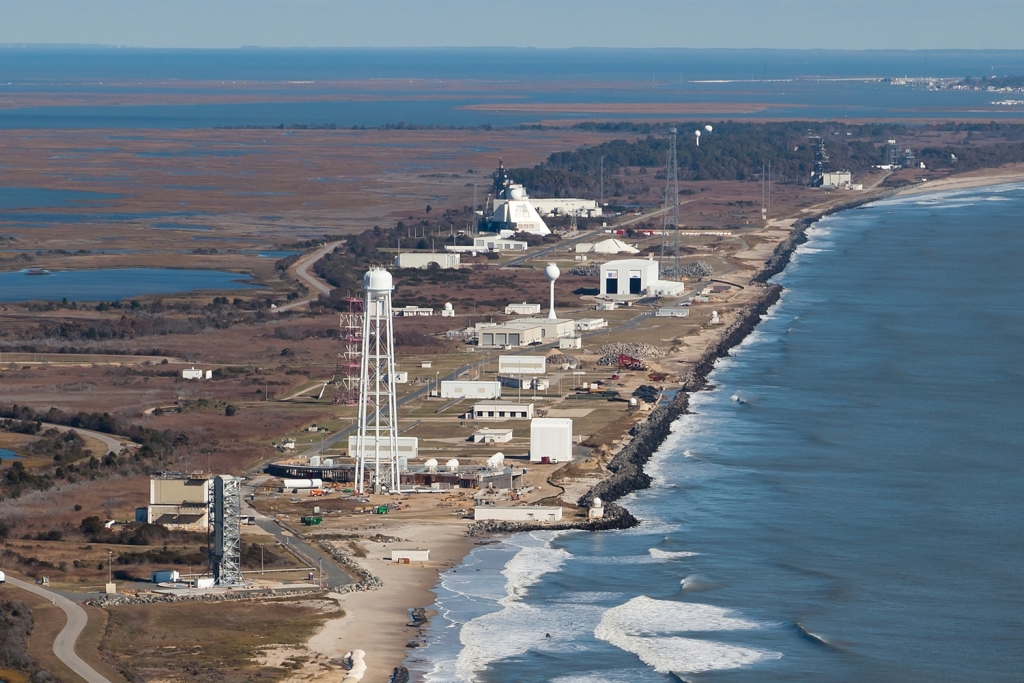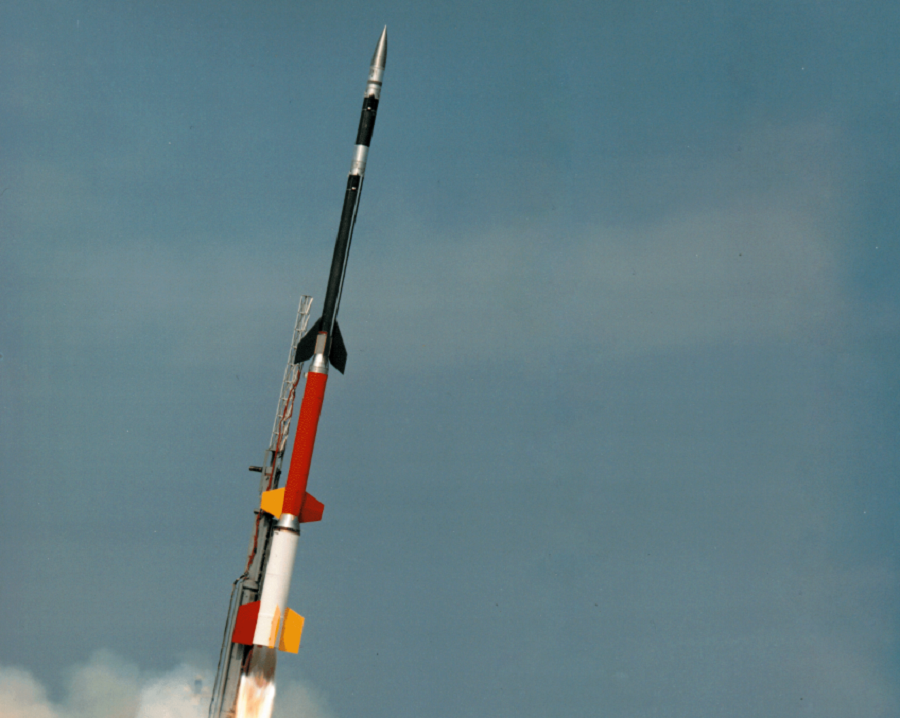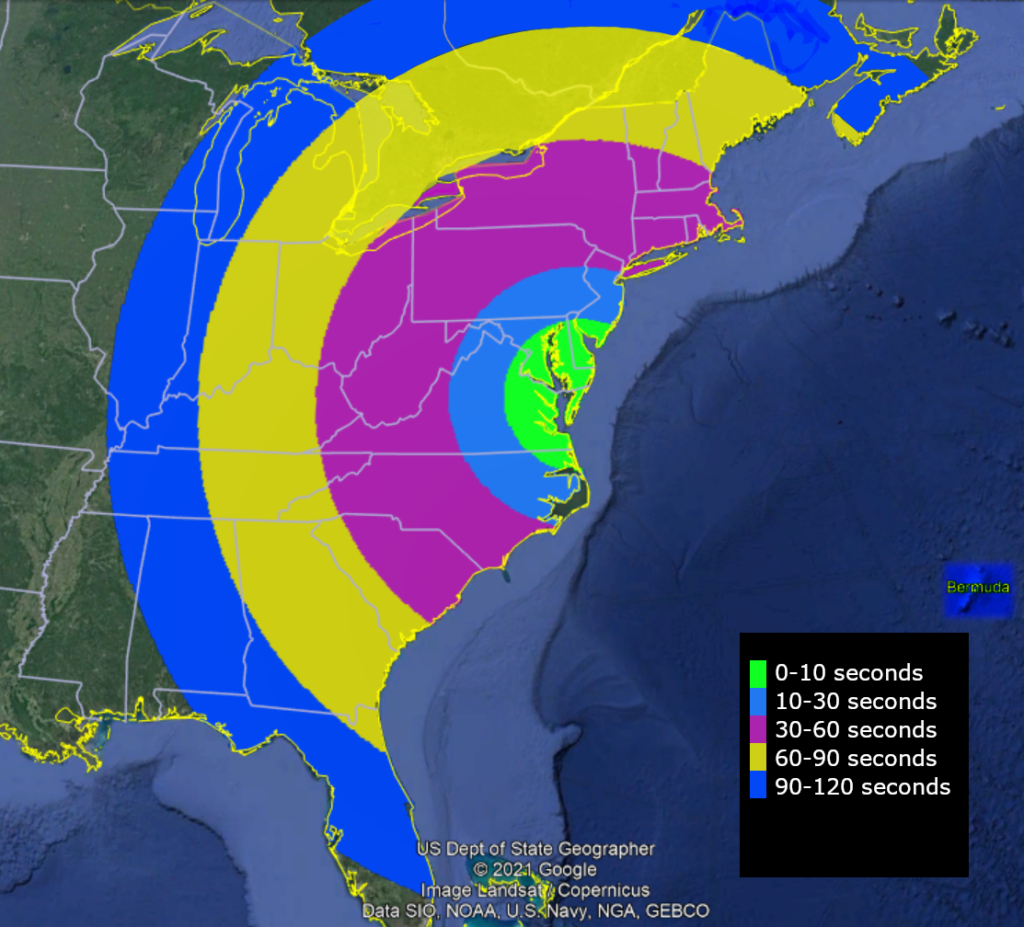
Tonight is the last chance a rocket carrying an experimental payload will be able to launch anytime soon; unfortunately, the weather looks quite iffy that it’ll occur. After a week of scrubbed launches, NASA has announced they are “GO” for launch tonight from the NASA Wallops spaceport, where a rocket could trigger a colorful glow high in the sky off of the East Coast. The rocket and a vapor trail it is creating should be visible across a broad area of the eastern U.S. tonight, weather permitting. However, clouds are in the forecast for both Wallops Island and Bermuda, two places where clear skies are needed to properly conduct the experiment.
According to NASA, tonight will be the last attempt to launch for now. “The moon will begin to be too high above the horizon at sunset, so it will be too bright to be able to see vapor traces in the sky,” NASA said. “If we don’t launch, we will evaluate another launch time for later in the year.”
NASA has tried many times to launch this rocket without success over the last week. Attempts last weekend and week were scrubbed due to unfavorable weather conditions, most of which were at or above the Virginia spaceport. On Thursday, the launch was postponed again to provide time for inspection of the rocket after the vehicle came in contact with a launcher support during launch preparations. Clouds at Bermuda last night forced that launch attempt to scrub.
Launching from their Wallops Flight Facility on the coast of Virginia, NASA is hoping to kick-off the KiNETic-scale energy and momentum transport eXperiment, known as KiNeT-X for short. A 4-stage Black Brant XII rocket will be launched shortly around/after 8pm, when a 40-minute launch window opens at 7:59 pm ET. 
This rocket will carry an experiment high above the Earth’s surface after launch from NASA Wallops spaceport in Virginia. Image: NASA
The purpose of this rocket launch is to study a fundamental problem in space plasmas: how are energy and momentum transported between different regions of space that are magnetically connected?
At roughly 9 minutes and 30 seconds after launch at an altitude of about 217-249 miles about 540-560 miles downrange from the Wallops facility and just north of Bermuda, barium vapor will be released into the atmosphere. When this happens, two green-violet clouds could be visible in the sky for about 30 seconds.

According to NASA, the ionized portion of the cloud becomes tied to the magnetic field lines and diffuses parallel to the field lines but not perpendicular to it. In the mid-Atlantic region latitudes, the field lines are inclined by about 45 degrees to the horizontal, so the violet clouds stretch out in a slanted orientation and look more like short trails than a cloud. Because the motion of the neutral portion of the clouds is not constrained by the magnetic field lines, they spread out more quickly and become too thin to see with the naked eye much sooner than the ionized component.
Yup, pretty much.@NASA_Wallops pic.twitter.com/qjTwWLxy3U
— the Weatherboy (@theWeatherboy) May 11, 2021
NASA says the barium vapor being released is not harmful to the environment or public health.
Unlike for larger launches, such as the Cygnus cargo craft launches to the International Space Station, the NASA Visitor Center at Wallops will not be open for launch viewing of this rocket. The facility remains closed to visitors due to the ongoing global pandemic.